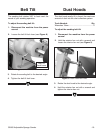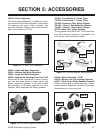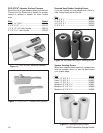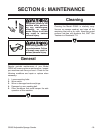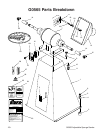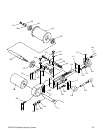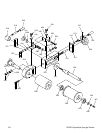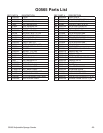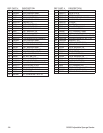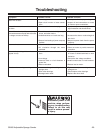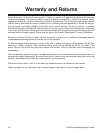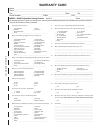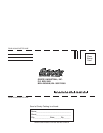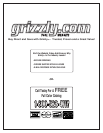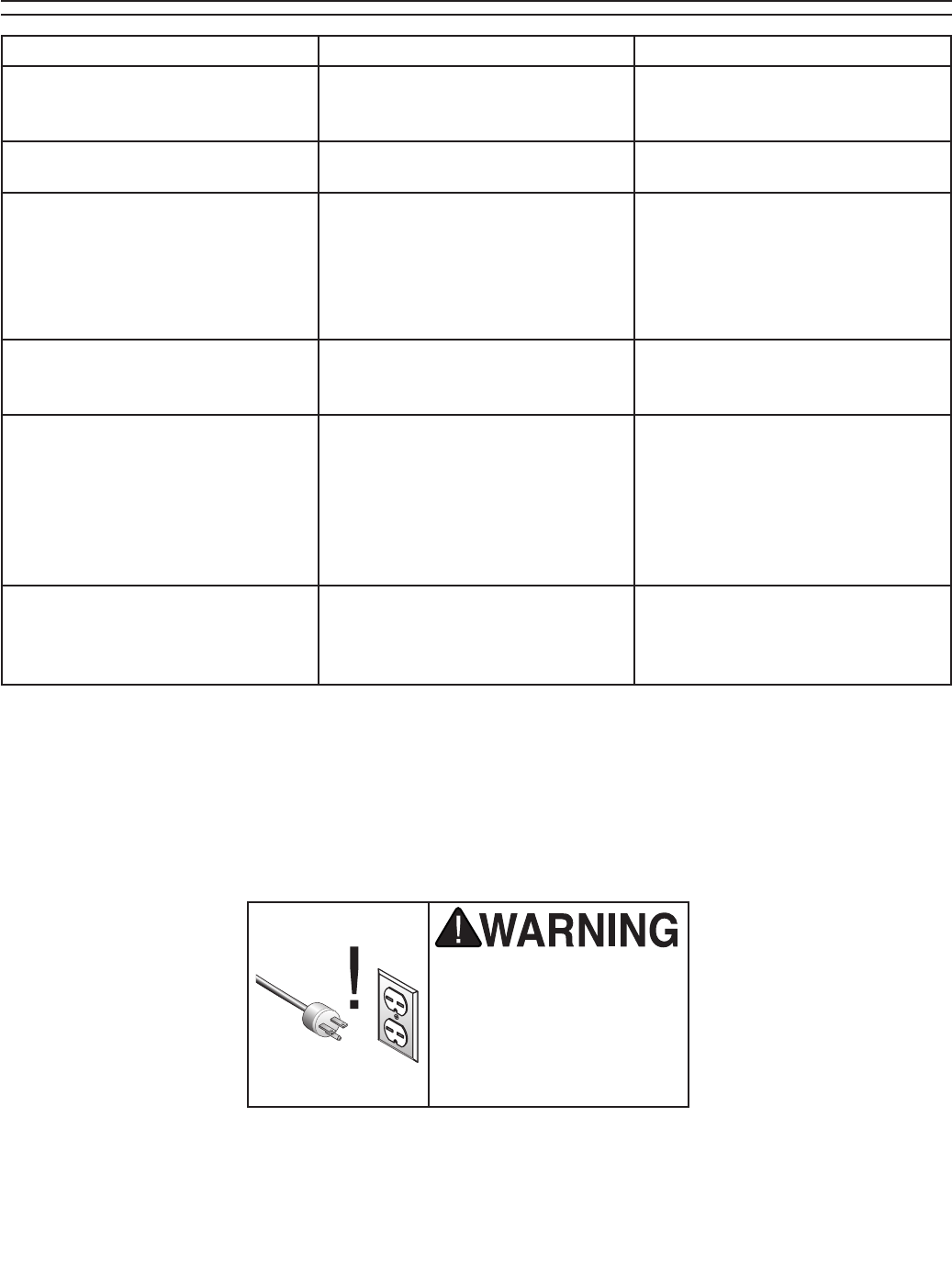
G0565 Adjustable Sponge Sander
-25-
Disconnect power to the
machine when perform
-
ing any troubleshooting.
Failure to do this may
result in serious person
-
al injury.
Symptom Possible Cause Possible Solution
Motor will not start.
1. Low voltage.
2. Open circuit in motor or loose connec
-
tions.
1. Check power line for proper voltage.
2. Inspect all lead connections on motor
for loose or open connections.
Motor will not start; fuses or circuit break
-
ers blow.
1. Short circuit in line cord or plug.
1. Repair or replace cord or plug for dam-
aged insulation and shorted wires.
Motor fails to develop full power (output
of motor decreases rapidly with decrease
in voltage at motor terminals).
1. Power line overloaded with lights, appli
-
ances, and other motors.
2. Undersized wires or circuits too long.
3. General overloading of power company
facilities.
1. Reduce load on power line.
2. Increase wire sizes or reduce length of
the circuit.
3. Request a power check from the power
company.
Motor overheats. 1. Motor overloaded.
2. Air circulation through the motor
restricted.
1. Reduce load on motor.
2. Clean out motor to provide normal air
circulation.
Motor stalls (resulting in blown fuses or
tripped circuit).
1. Short circuit in motor or loose connec
-
tions.
2. Low voltage.
3. Incorrect fuses or circuit breakers in
power line.
4. Motor overloaded.
1. Repair or replace connections on motor
for loose or shorted terminals or worn
insulation.
2. Correct the low voltage conditions.
3. Install correct fuses or circuit breakers.
4. Reduce load on motor.
Vibration when running or cutting. 1. Loose or damaged sanding belt or
sponge drum.
2. Worn arbor bearings.
3. Damaged arbor shaft.
1. Tighten or replace sanding belt or
sponge drum.
2. Check/replace arbor bearings.
3. Replace the arbor shaft.
Troubleshooting



